Santa Cruz Island offers a picturesque getaway off California coast
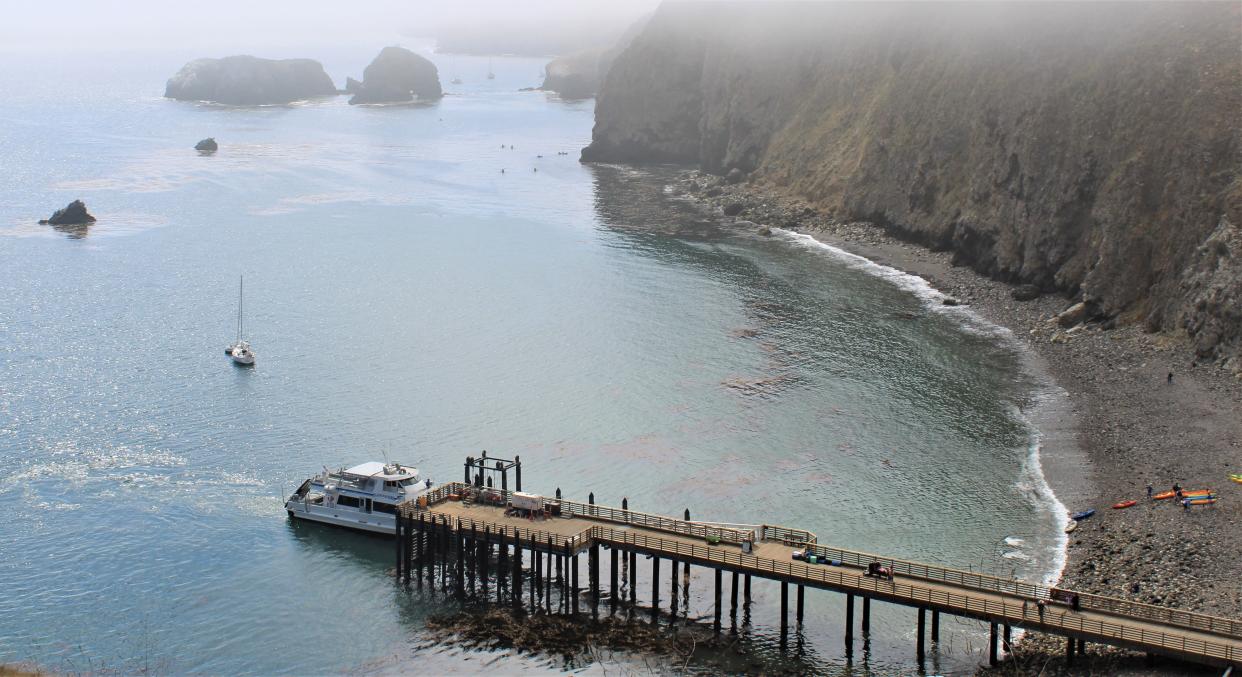
The morning started somewhat foggy as Laureen and I climbed aboard the large passenger boat operated by Island Packers out of the Ventura Harbor.
“Rather foggy this morning,” I said while grabbing Laureen’s backpack as she climbed up the stairs to the exterior sitting area on the top of the boat.
“May ruin our chances at seeing any whales,” she said.
“If there be whales, my Lassie, we are seeing them. Arrr.”
We were heading across nearly 22 miles of the Pacific toward Scorpion Anchorage on Santa Cruz Island.
It was our first time visiting this Channel Island, and the thought of powering through the blue waters to the west was thrilling.
Skimming the surface of any body of water in a boat is fantastic, but to travel to a place we had not been before makes the adventure even better.
In the past, we had visited Santa Catalina Island a few times and always enjoyed the quaintness of the island. The small boutique hotels, restaurants, and islandy things to do are always made for fun getaways.
But this time was different. On Santa Cruz Island, there are no boutique hotels or restaurants to visit.
The 22-mile-long island is part of the Channel Islands National Park and is maintained as a sanctuary preserving the island as it may have looked thousands of years in the past.
Archaeologists believe this island had been inhabited for at least 10,000 years. The natives who lived on the island were the Chumash, who were experienced mariners — often trading with others on the mainland using their carved-out canoes.
Huge fallen redwood trees would drift down from what is now Northern California to the beaches in what is now Southern California, where the Chumash would gather them up and cut the trees into long planks. These planks were then fastened together using animal sinews and sealed with a tar-like substance called "yop."
“Did you apply the yop to each plank?” The Chumash father would ask his son.
“Yop,” would come the reply.
The Chumash called the island "Limuw," translated as "place of the sea." A pretty good name for an island.
When the Spanish explorer Juan Rodriguez Cabrillo first caught sight of the Channel Islands in 1542, it was estimated that 3,000 natives were living on the three northern islands — San Miguel, Santa Rosa, and Santa Cruz.
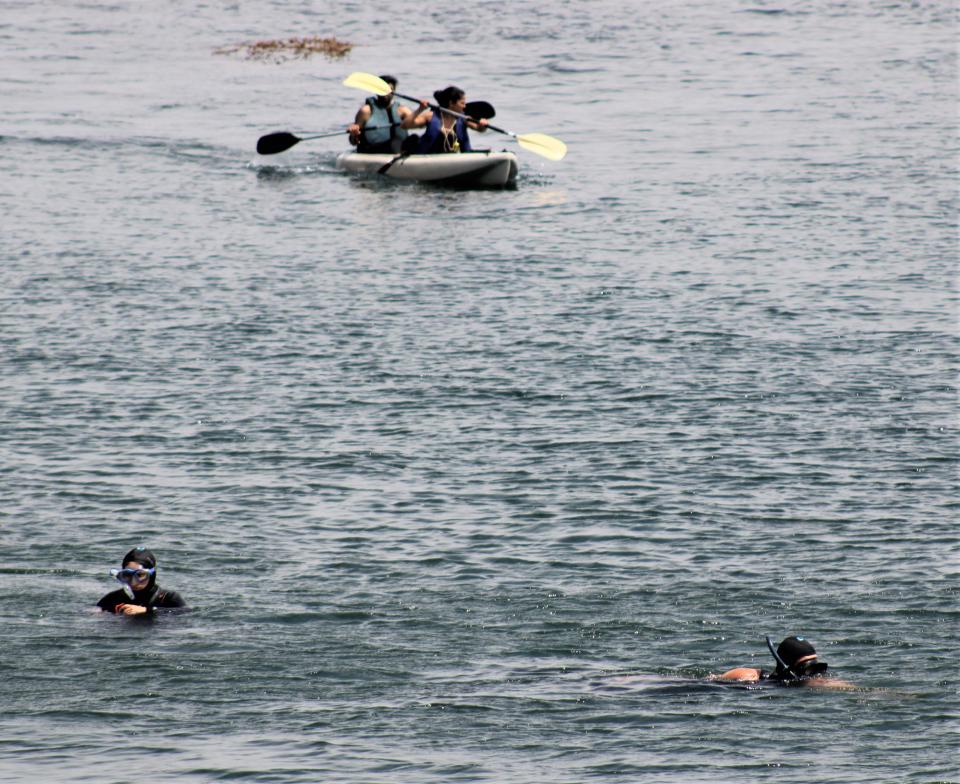
There were 11 separate villages on Santa Cruz alone.
In 1602, Sebastian Vizcaino visited the islands and named the island Isla de Gente Barbuda, which, when translated, means "island of the bearded people."
And that was a lot to say from a Spanish explorer who sported a Van Dyke beard and a ‘you must pay the rent sort of mustache.
The islands were not revisited for 167 years until Explorer Don Gaspar de Portola arrived and landed on Santa Cruz.
According to Father Palou, who traveled on board with the missionaries, wrote about their first interactions with the natives living on the island.
‘They were well received by the heathen and presented with fish, in return for which the Indians were given some strings of beads.’
How generous — beads for fish. Those Spanish explorers were nothing if not generous with the "heathens."
Unfortunately, for many folks who met foreign-born explorers, the Chumash population soon started to decline from various diseases like measles. By 1822, the few remaining island Chumash moved across the waters to the mainland.
The renaming of the island to Santa Cruz came by accident as one missionary had inadvertently left a large staff topped by an Iron Cross on the island. A Chumash native returned the cross when the Spanish changed the island's name to Santa Cruz, "island of the holy cross."
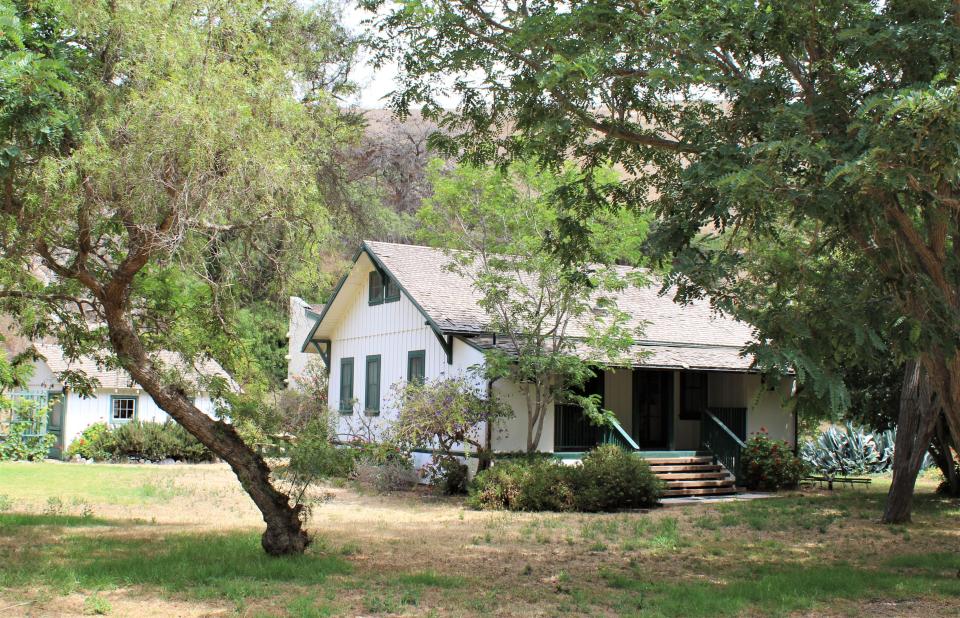
Mexico won independence from Spain in 1821 and took control of all the land in Alta California, including the Channel Islands.
In 1830, the Mexican government shipped 80 prisoners to Santa Barbara and then sent 31 naughty ones to Santa Cruz Island, where they were forced to live at what is now known as Prisoners Harbor. Soon, they all escaped back to the mainland and caused a crime wave.
Our boat was not heading to Prisoners Harbor but the Scorpio to Anchorage.
Island Packers had packed our boat for the trip across the waters. But there was plenty of room, much more than would have been on a redwood log boat, to roam here and there on both decks.
There was a galley serving all kinds of goodies and drinks. It was far too early in the morning for an adult beverage, but I knew that one might be just what the captain would order upon the return crossing.
A few miles out of Ventura Harbor, the boat was greeted by a million dolphins skittering across and through the boat's wake.
Flipper and his family were everywhere. People on board instantly started snapping photos or videos on their phones and cameras. Everyone was excited.
Some of the dolphins even stood up on their tails for us to get better shots.
But, like all trips, one guy caused a bit of an issue. He was yelling insults at the dancing and prancing Delphines.
“You can’t swim and be ugly like your mama.”
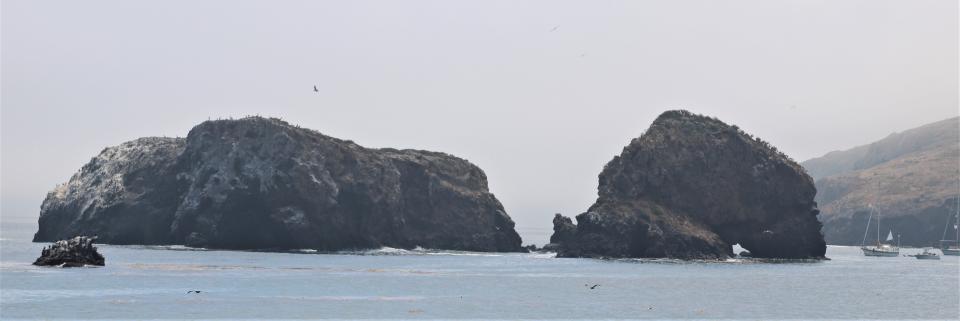
We all cheered as four mackerels, thrown by a pod of dolphins, smacked the ignoramus in the mug. He was sent to the brig for the remainder of the trip.
A few miles east of the island, the captain suddenly slowed the craft down, but Laureen was pointing to the southwest before he could make an announcement.
“There’s a humpback on the port side.”
My wife, such a sailor — the port side.
She was correct, and soon 50 yards off port breached the humpback whale. Three-quarters of it were out of the water, and it started waving its flukes at us.
It was a beautifully majestic sight. The whale slowly swam across the stern and then disappeared starboard.
“That was worth the whole trip,” people were saying.
It was.
The boat docked at Scorpion Anchorage and unloaded the passengers. A ranger was waiting for us at the end of the pier to discuss what could be seen among the various hiking trails across the island.
"Are we going to listen to her?" Laureen asked.
"I have a map and know where we are going."
I could hear the roll of her eyes, but it may have been the waves softly splashing on the nearby beach.
Many of the Channel Islands were used as sheep or cattle ranches starting in the 1850s after the Mexican American War ended in 1848 and the United States took possession of the lands that once belonged to Mexico. Land which had once belonged to Spain and had also once belonged to the natives living there for thousands of years.
In 1980, the Channel Islands National Park was created, including Santa Cruz Island. But it is a bit different than some other islands since the National Park Service owns and operates only 24 percent of the island, with the other under the Santa Cruz Island Reserve. The bulk of the island is a conservancy. It is used for scientific research and education by The University of California Natural Reserve System, the Santa Cruz Island Foundation, and the Nature Conservancy.
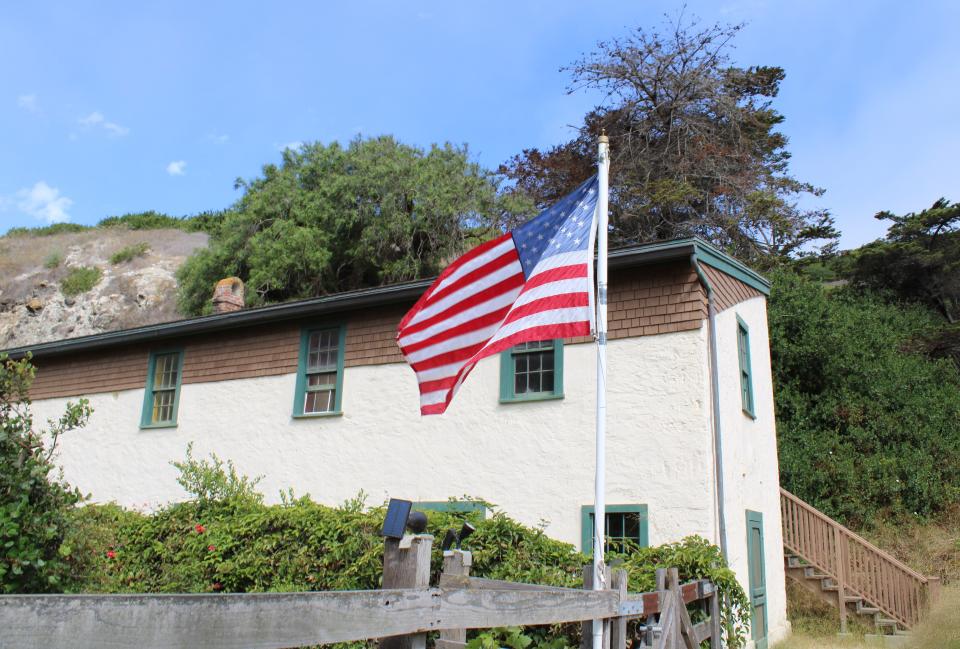
The Scorpion Ranch Headquarters, now used as the visitor’s center, is a beautiful respite with tall old trees, grass, and buildings from the early days of the ranchers who had once lived there.
A small but fact-filled museum is there for tourists to learn the history of the island and the importance it played for humans for thousands of years.
We walked, talked, and enjoyed the time around the headquarters, but there was hiking.
A point here is that visitors must bring all they need for the day or the time spent camping on the island. There are no sundry stores — you get what you have no matter the length of stay — and pack out what you bring.
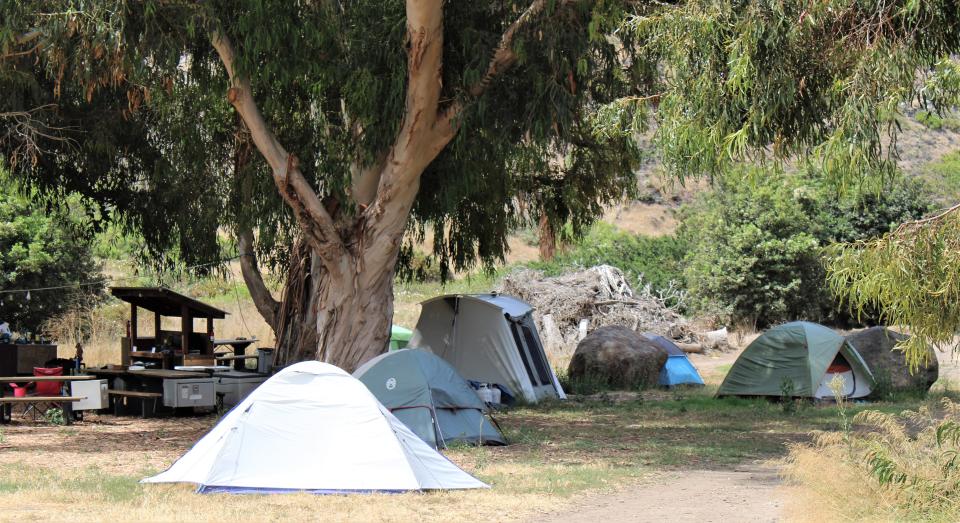
There are hikes for every type of hiker on the island. Half-mile walks to strenuous 18-mile or more treks.
To name a few, Potato Harbor, Smugglers Cove, and Chinese Harbor wander atop and across gorgeous paths revealing beautiful views of the ocean, the bays, the rocky cliffs, and rolling hills.
And one significant aspect is to see the Island Fox, found only on the Channel Islands. A little cutie that scampers here and there. We saw at least a dozen on our walk-about in Santa Cruz.
The sun broke through the fog by mid-morning, leaving Laureen and me plenty of sunshine to enjoy the splendor of nature at its best.
One of our hikes offered a majestic view. People were kayaking, snorkeling, swimming, and enjoying a wonderful day.
And isn’t that what a person should experience when traveling?
Email John R. Beyer at beyersbyways@gmail.com.
This article originally appeared on Victorville Daily Press: Santa Cruz Island a picturesque travel getaway off California coast

